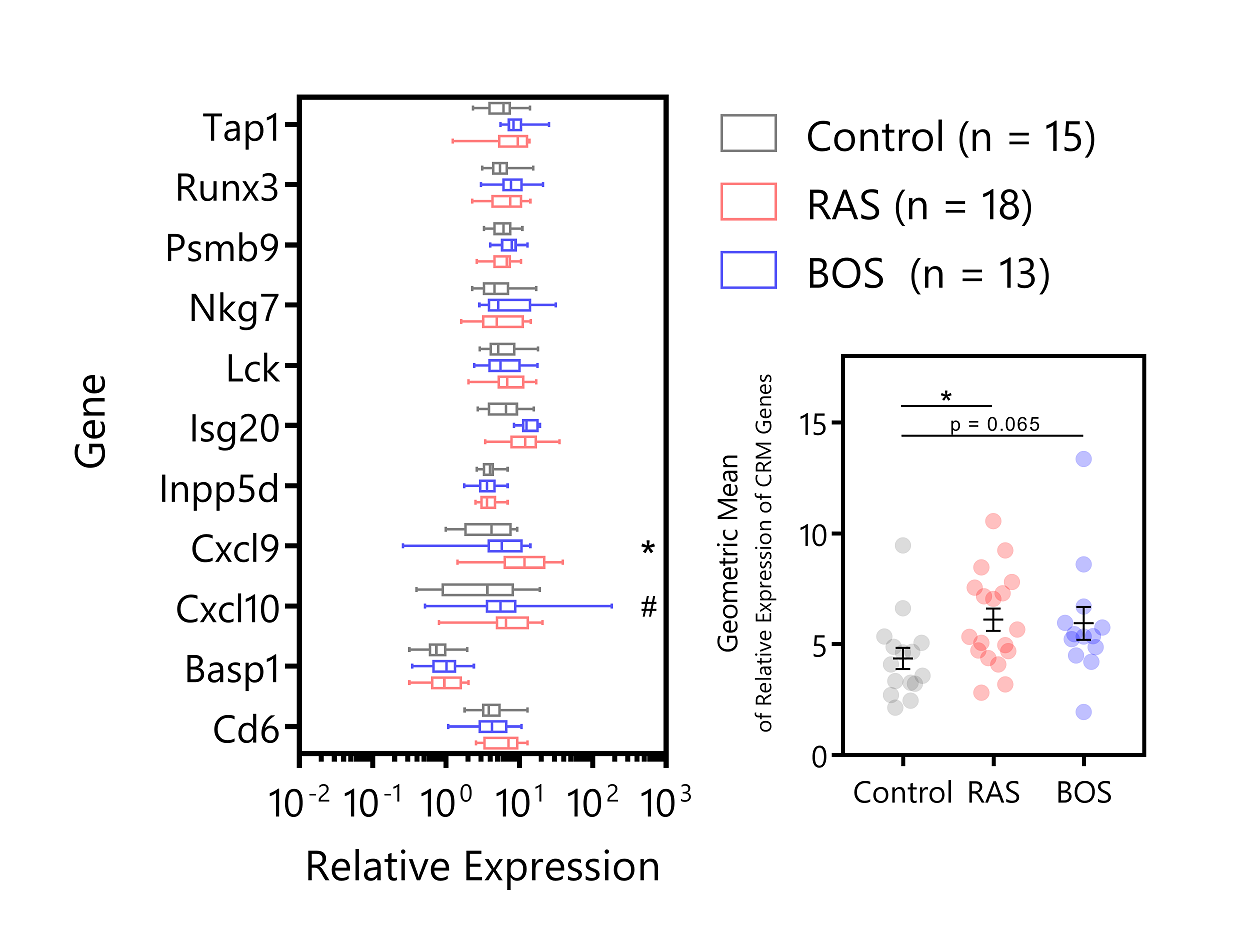Novel Biomarkers for Segregating Lung Transplant Rejection Phenotypes.
1Department of Surgery, University of California, San Francisco, San Francisco, CA
2Department of Pneumology, University of Leuven, Leuven, Flemish Brabant, Belgium
Meeting: 2017 American Transplant Congress
Abstract number: D24
Keywords: Gene expression, Lung transplantation, Obilterative bronchiolitis, Rejection
Session Information
Session Name: Poster Session D: Diagnostics/Biomarkers Session II
Session Type: Poster Session
Date: Tuesday, May 2, 2017
Session Time: 6:00pm-7:00pm
 Presentation Time: 6:00pm-7:00pm
Presentation Time: 6:00pm-7:00pm
Location: Hall D1
We sought to investigate biomarkers in BAL fluid and tissue for segregating BOS and RAS chronic rejection phenotypes in lung allografts. We had previously identified a common response module (CRM) of 11 genes that define acute rejection (AR) across different engrafted tissues. The CRM score quantifies injury and stratifies patients at increased risk of future progressive fibrosis. We investigated if this CRM score could be applied for progressive rejection post lung transplantation with special consideration for the different phenotypes of chronic lung rejection.
Methods: We collected and analyzed BAL fluid cell pellet and tissues from patients with different phenotypes of end-stage chronic lung rejection (Bronchiolitis Obliterans Syndrome, BOS, n=13 vs. Restrictive allograft syndrome, RAS, n=18) and compared this to unused donor lungs for tissue or stable non-rejecting patients for BAL (n=15). RNA was extracted and the CRM gene expressions were measured.
Results: We found several genes that were differentially regulated in tissue. CXCL10 was increased in tissue of BOS vs. control patients (p < 0.0001) and in BOS vs. RAS (p = 0.0077). CXCL9 was increased in tissue of RAS vs. control patients (p = 0.0021) and in RAS vs. BOS (p = 0.0232). The geometric mean CRM score was higher in RAS versus control (p=0.0272) and trending in BOS (p = 0.0652). Neither the CRM score or individual genes in BAL fluid cell pellet were significantly different.  Conclusion: A proportion of the CRM genes were upregulated in RAS compared to BOS and control. Since RAS shows typical interstitial fibrosis, it is of interest that the gene expression signature is similar to rejection post kidney transplantation which could demonstrate that similar mechanisms are in place causing the progressive tissue fibrosis. A study including more tissue or a prospective study is further needed to validate these findings.
Conclusion: A proportion of the CRM genes were upregulated in RAS compared to BOS and control. Since RAS shows typical interstitial fibrosis, it is of interest that the gene expression signature is similar to rejection post kidney transplantation which could demonstrate that similar mechanisms are in place causing the progressive tissue fibrosis. A study including more tissue or a prospective study is further needed to validate these findings.
CITATION INFORMATION: Yang J, Vanaudenaerde B, Sigdel T, Liberto J, Verlden S, Sarwal M. Novel Biomarkers for Segregating Lung Transplant Rejection Phenotypes. Am J Transplant. 2017;17 (suppl 3).
To cite this abstract in AMA style:
Yang J, Vanaudenaerde B, Sigdel T, Liberto J, Verlden S, Sarwal M. Novel Biomarkers for Segregating Lung Transplant Rejection Phenotypes. [abstract]. Am J Transplant. 2017; 17 (suppl 3). https://atcmeetingabstracts.com/abstract/novel-biomarkers-for-segregating-lung-transplant-rejection-phenotypes/. Accessed December 18, 2025.« Back to 2017 American Transplant Congress
